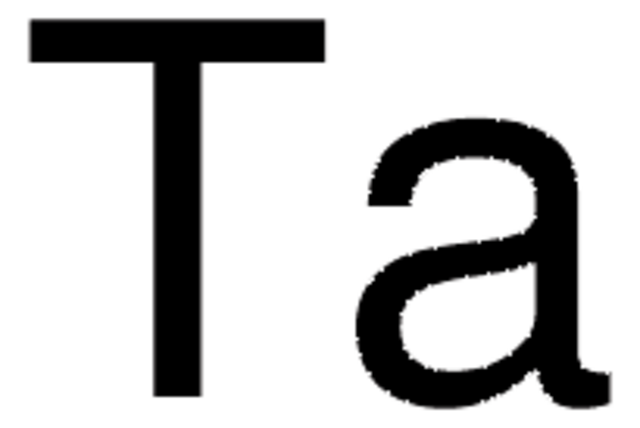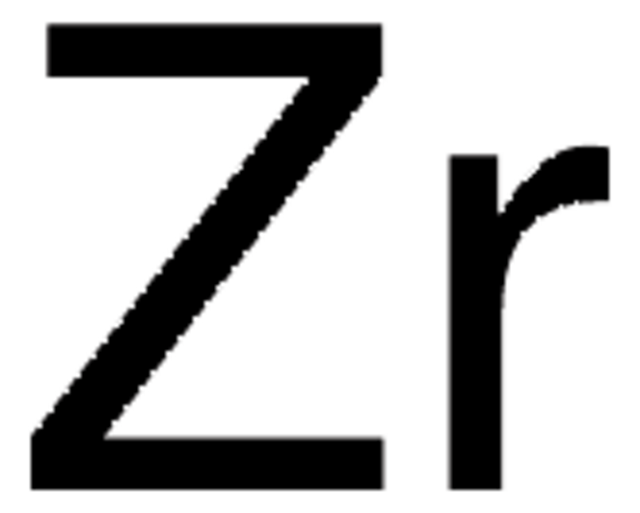262722
Niobium
powder, <45 μm, 99.8% trace metals basis
Sinonimo/i:
Columbium
About This Item
Prodotti consigliati
Livello qualitativo
Saggio
99.8% trace metals basis
Forma fisica
powder
Resistività
13-16 μΩ-cm, 20°C
Dimensione particelle
<45 μm
P. eboll.
4742 °C (lit.)
Punto di fusione
2468 °C (lit.)
Densità
8.57 g/mL at 25 °C (lit.)
Stringa SMILE
[Nb]
InChI
1S/Nb
GUCVJGMIXFAOAE-UHFFFAOYSA-N
Cerchi prodotti simili? Visita Guida al confronto tra prodotti
Avvertenze
Danger
Indicazioni di pericolo
Consigli di prudenza
Classi di pericolo
Flam. Sol. 1
Codice della classe di stoccaggio
4.1B - Flammable solid hazardous materials
Classe di pericolosità dell'acqua (WGK)
nwg
Punto d’infiammabilità (°F)
Not applicable
Punto d’infiammabilità (°C)
Not applicable
Dispositivi di protezione individuale
Eyeshields, Faceshields, Gloves, type N95 (US)
Scegli una delle versioni più recenti:
Possiedi già questo prodotto?
I documenti relativi ai prodotti acquistati recentemente sono disponibili nell’Archivio dei documenti.
I clienti hanno visto anche
Articoli
An article concerning self-propagating reactions induced by mechanical alloying, presented by Sigma-Aldrich.com.
Biomedical implants are essentially foreign substances within the human body that must survive many years’ exposure to demanding mechanical and physiological conditions. Despite these challenges, metal implants have been widely used to substitute for or rebuild hard tissues such as bones and teeth.
Il team dei nostri ricercatori vanta grande esperienza in tutte le aree della ricerca quali Life Science, scienza dei materiali, sintesi chimica, cromatografia, discipline analitiche, ecc..
Contatta l'Assistenza Tecnica.








